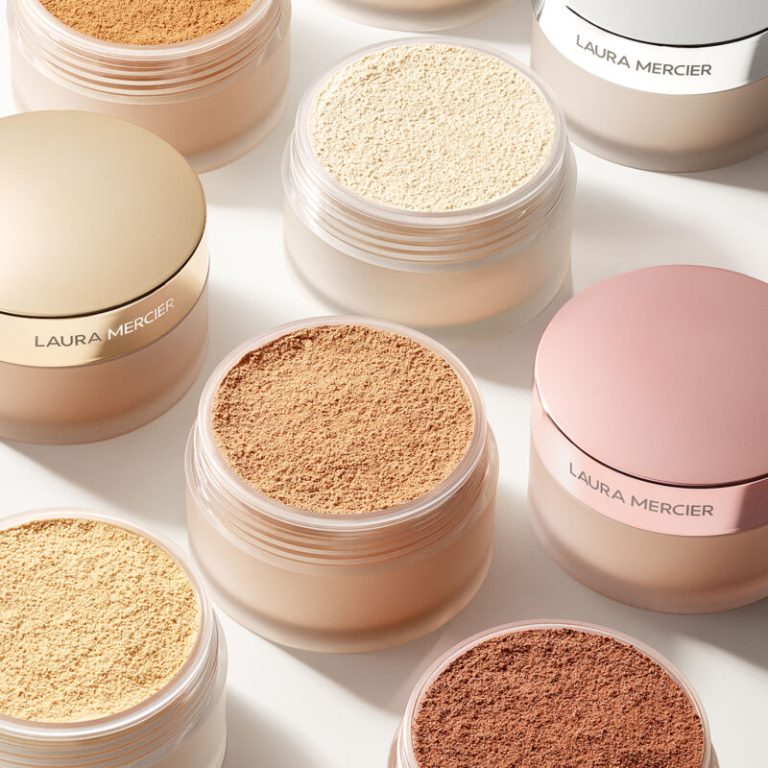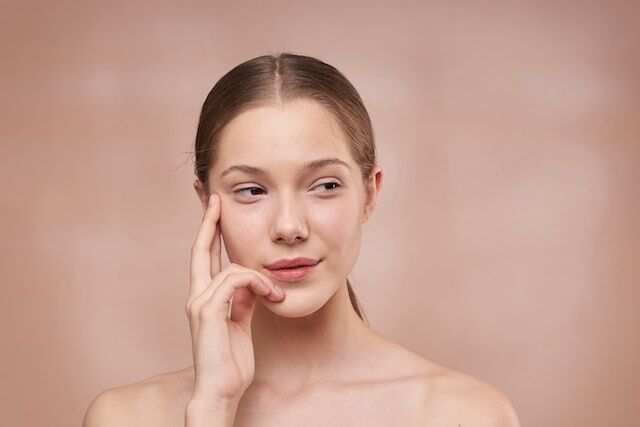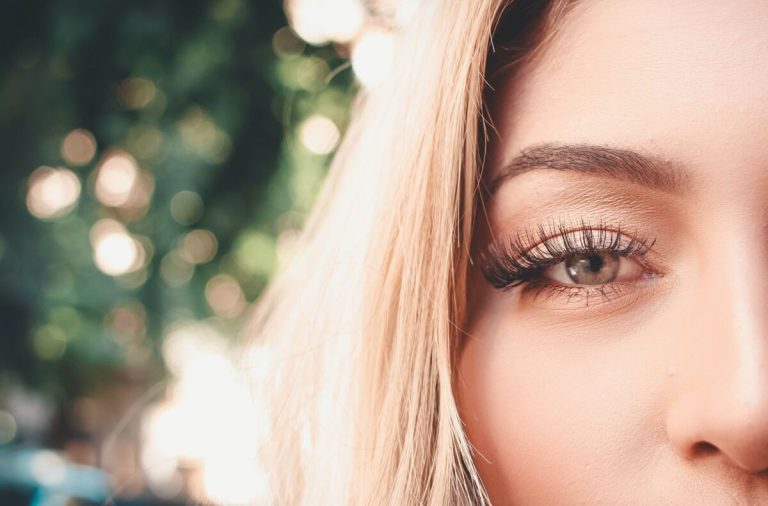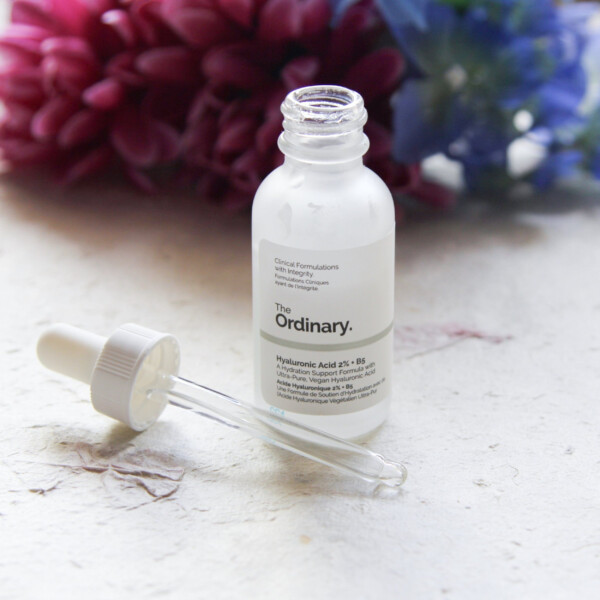Should You Apply Primer Or Moisturizer First?
Conflicting information often circulates on whether you should apply primer or moisturizer first in your makeup routine. However, the order you apply these products can majorly impact how your makeup looks and lasts throughout the day. As key steps in achieving a flawless, smooth canvas before makeup application, understanding when to use primer vs. moisturizer is essential.
I’m going to clear up whether primer or moisturizer should go on your skin first. I’ll also discuss waiting times, the differences between the two products, and the benefits of using both moisturizer and primer. By the end, you’ll know the ideal order to apply primer and moisturizer for radiant, healthy, and makeup-ready skin.
Moisturizer Comes First, Followed By Primer and Foundation
Contents
- Moisturizer Comes First, Followed By Primer and Foundation
- The Importance of Moisturizer For All Skin Types
- How Primer Creates A Smooth Makeup Base
- Wait Time Depends On Moisturizer & Primer Types
- Primers & Moisturizers Have Different Roles
- Moisturizers Provide Key Skincare Benefits
- Additional Primer Benefits Beyond Makeup Gripping
- You Still Need Moisturizer Under Primer
- Benefits of Using Face Primer For Makeup
- How Primer Prevents Caked or Cakey Makeup
- More Skincare Benefits of Primers
- Can You Wear Primer Alone Without Makeup?
- Potential Primer Drawbacks To Consider
- Why Should You Use A Face Moisturizer?
- Locks In Moisture Based On Your Skin Needs
- Proper Steps To Apply Moisturizer
- Proper Steps For Applying Face Primer
- Moisturizer First, Primer Second: The Ideal Order
When prepping your skin for makeup application, moisturizer should always come first before any primer. As your first layer of skincare, moisturizer provides essential hydration and nourishment to keep your complexion healthy and moisturized beneath makeup.
Moisturizer helps skin look plump and supple. It also restores the skin barrier and locks in moisture. Applying moisturizer before primer allows the hydrating ingredients to penetrate deeply into the skin first. This creates the ideal smooth, hydrated base for your primer to adhere to.
After moisturizer has absorbed, primer is applied as the next step. Primer forms a thin veil over the skin, filling in pores and fine lines to create a flawless canvas for foundation. Applying primer on top of moisturizer helps the primer glide onto the skin smoothly and grip makeup in place all day.
So remember: always apply moisturizer first, followed by primer, then your foundation or other makeup products. This order ensures your skin gets the hydration it needs while still reaping the flawless base benefits of primer.
The Importance of Moisturizer For All Skin Types
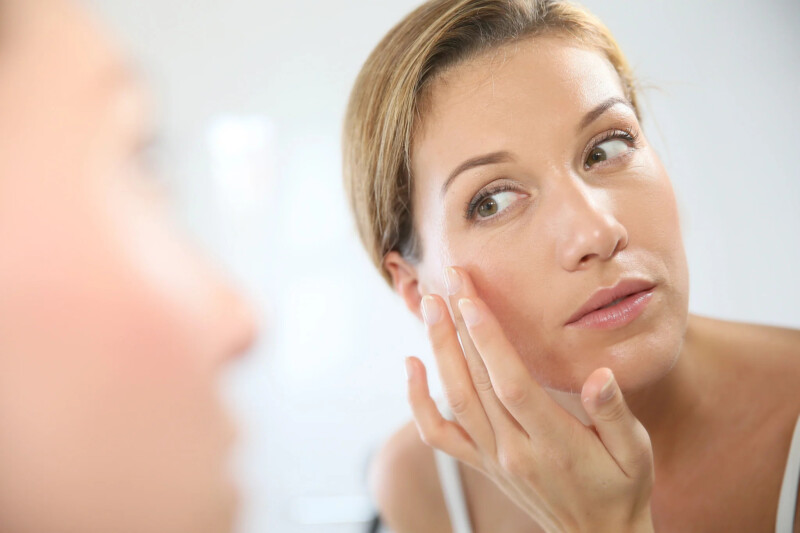
No matter your skin type – dry, oily, combination, or sensitive – moisturizer is crucial for healthy, balanced skin. Here’s why it’s so essential:
Moisture For Dry Skin
If you have dry skin, moisturizer is vital for restoring hydration, suppleness, and moisture retention. Dry skin lacks oil and needs added water content to feel soft and smooth. Rich moisturizers like creams or lotions provide intense hydration to replenish parched skin. They nourish and prevent further dryness or flaking beneath makeup.
Balanced Oil For Oily Skin
For oily and acne-prone skin, oil-free gel moisturizers help balance excess sebum production. Using moisturizer helps slow oil production by providing light hydration to your skin. This keeps skin from overcompensating with more oil. Mattifying oil-free moisturizers also limit shine under makeup.
So no matter if your skin veers dry or oily, make sure to use the right moisturizer first to meet your skin’s needs. This keeps your complexion balanced and prepped for flawless makeup.
How Primer Creates A Smooth Makeup Base
After hydrating with moisturizer, apply primer to perfect your canvas right before makeup. As a makeup primer, here are some of the key benefits:
Primers Fill In Pores & Lines
Silicone-based primers glide over the skin, quickly filling in pores, fine lines, and imperfections that can later get accentuated by foundation. This creates a blurred, smoothed effect under makeup.
Primers Help Grips Makeup
Primers also provide a tacky or slightly sticky base that keeps foundation and concealer set in place all day. This prevents caking, sliding, or fading of your makeup.
So primer forms a protective film over your moisturized skin, hiding imperfections and allowing makeup to grip onto the surface. Always apply primer after moisturizer but before any complexion makeup for a flawless base.
Wait Time Depends On Moisturizer & Primer Types
Now you know moisturizer comes before primer in your routine. But how long should you wait between applying your moisturizer and your primer?
The waiting time depends on the formulas of your moisturizer and primer. Here are some general guidelines:
Lightweight Gel Moisturizers
For lightweight gel moisturizers that absorb quickly, you can immediately apply your primer after. No waiting time is needed.
Heavy Cream Moisturizers
Thicker creams or lotions need 5-10 minutes to absorb before applying primer. Waiting prevents pilling or balling up on the skin when the products interact.
Silicone Primers
Silicone-based primers like smashbox also need a minute or two before applying foundation. Let the primer set completely so it adheres makeup smoothly.
So consider the texture of your moisturizer and primer. Give thicker, heavier products extra time to absorb fully before layering on the next step.
Primers & Moisturizers Have Different Roles
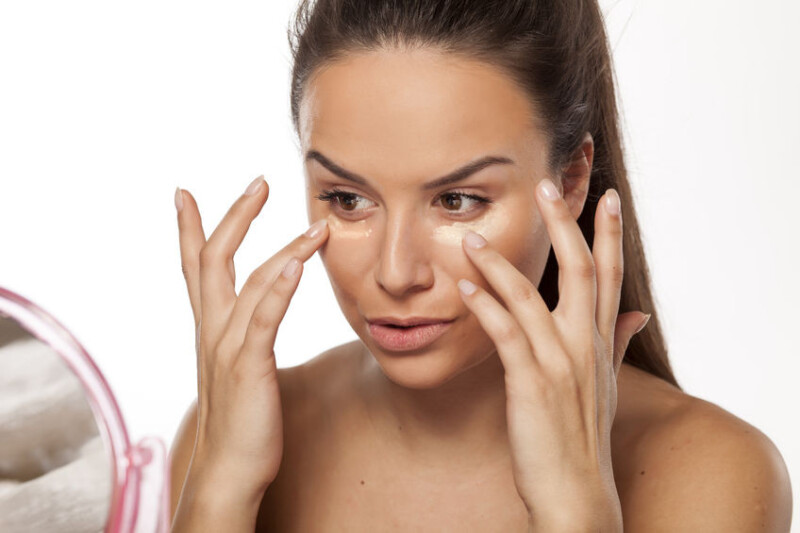
While primers and moisturizers both prep your skin before makeup, they serve different roles. Here are the key differences:
Primers Create A Makeup Base
A primer’s main role is filling pores and smoothing the skin to create the perfect canvas for long-lasting makeup. Primers alone don’t provide enough moisturization for most skin types.
Moisturizers Hydrate The Skin
Moisturizers nourish and hydrate the skin itself. They provide anti-aging and collagen-boosting benefits to keep skin healthy beneath makeup. Moisturizer is essential even on no-makeup days to replenish the skin.
So in summary:
- Use primer to perfect your makeup base
- Use moisturizer to hydrate, nourish, and improve your actual skin
That’s why both are needed in your routine – they serve different but complementary purposes!
Moisturizers Provide Key Skincare Benefits
Beyond just surface hydration, using the right moisturizer provides many other skincare benefits for healthy, youthful-looking skin:
Hydration & Moisture Retention
Moisturizers contain humectants like glycerin that draw in water to the skin. Emollients like ceramides also trap moisture in the skin. This provides short-term and long-term hydration.
Anti-Aging & Collagen Boosting
Many moisturizers contain peptides, retinols, antioxidants, and other anti-aging ingredients to reduce wrinkles. They help stimulate collagen production for firmer, more elastic skin over time.
Don’t skip daily moisturizer even if you’re using primer. Moisturizer is crucial for nourishing your skin and combating aging. Your primer will also go on and perform better over well-moisturized skin.
Additional Primer Benefits Beyond Makeup Gripping
Besides just filling in pores and fine lines, many modern primers also provide skincare benefits like:
Light-Reflecting Pigments & SPF
Some primers contain pearl pigments or mineral SPF to impart a luminous, lit-from-within glow. These ingredients reflect light away from pores while providing sun protection.
Hydration & Oil Control
Certain primer formulas also treat skin issues like dryness or excess oil. Hydrating primers increase moisture while mattifying primers help control shine on oily skin types.
So check the ingredients and claims of your primer. Many now multitask with skincare bonuses beyond just basic gripping power.
You Still Need Moisturizer Under Primer
Can you skip moisturizer and just use a primer to prep your skin? I don’t recommend it. Here’s why moisturizer is still essential:
Moisturizers Hydrate Better
Even hydrating primers don’t provide as much deep hydration and nourishment as a dedicated moisturizer. Most primers sit on the surface while moisturizers penetrate deeper.
Moisturizers Repair Skin
Moisturizers also contain more antioxidants, vitamins, ceramides, and other ingredients that repair damage and provide nutrients for healthy skin. Primers lack these reparative ingredients.
Moisturizers Protect Against External Factors
A good moisturizer shields from the drying effects of the sun, wind, and environmental pollution. It keeps your skin’s moisture barrier intact beneath makeup and primer. Don’t skip this protective step!
Use primer to perfect your base, but always use moisturizer first to actually care for and replenish your skin. Moisturizer is the real MVP for healthy, happy skin!
Benefits of Using Face Primer For Makeup
Now that you know the importance of moisturizer, how does applying primer benefit your makeup application and wear?
Primers Create A Flawless Makeup Base
Primer’s main benefit is filling in pores, fine lines, and imperfections to create the perfect smooth, even canvas for foundation glide-on flawlessly.
Primers Allow Longer Lasting Makeup
The silicone polymers in primers allow makeup to “grip” onto the skin longer without fading, transferring, absorbing into pores, or sliding off the face. This keeps your makeup looking freshly applied all day.
Primer is the secret weapon for budge-proof, crease-free, vibrant makeup that won’t fade or transfer! Using a primer ensures your time and effort spent on makeup pays off with next-level longevity.
How Primer Prevents Caked or Cakey Makeup
Ever end up with makeup looking cakey, cracking, or settling into fine lines by the end of the day? Using primer prevents this!
On Oily Skin
Primer provides a smooth barrier between oily skin and foundation, preventing foundation from breaking up and caking up.
On Dry Skin
It also fills any flaky dry patches so foundation applies smoothly without grabbing onto dry areas and looking cakey.
So primer truly helps keep your makeup looking freshly applied no matter your skin type!
More Skincare Benefits of Primers
Many primers now also contain skincare ingredients like:
Skin-Nourishing Ingredients
Primers often contain antioxidants, vitamins, plant extracts, and other nutrients to treat and nourish skin.
Pollution & Oil Protection
Some primers help protect skin from environmental pollutants or excess oil and sebum production clogging pores.
So primer offers more than just a grippy base! Choose primer with added skincare properties to treat your particular skin concerns.
Can You Wear Primer Alone Without Makeup?
Wondering if you can wear primer on its own without any foundation or powder on top? The answer is yes!
Provides Sun Protection
Many primers contain mineral SPF ingredients like zinc oxide or titanium dioxide. This gives your skin sun protection.
Minimizes Pores & Smooths Texture
Silicone-based primers help temporarily minimize the look of pores and fine lines. They impart a soft-focus effect.
So on light makeup or no-makeup days, primer helps perfect and treat your bare skin. Just remember to still moisturize first before applying primer alone.
Potential Primer Drawbacks To Consider
While I’m a big primer fan, there are some potential drawbacks to consider:
Irritation For Sensitive Skin Types
The ingredients in certain primers may irritate sensitive skin and cause redness, itching, or acne breakouts. Always check the formula first.
Pore-Clogging Ingredients
Some primers have heavier formulas and ingredients like silicones that can potentially clog pores and cause breakouts. Seek non-comedogenic primers.
Incompatible With Your Skin Type
Using the wrong primer formula for your skin can worsen issues like dryness or oiliness. Make sure to choose a primer specifically formulated for your skin type.
To avoid problems, perform a patch test first and analyze the ingredients to determine if a specific primer will work for your skin. Don’t be afraid to try a few to find “the one”!
Why Should You Use A Face Moisturizer?
You know primer preps your canvas, but why is moisturizer so crucial in a skincare routine?
Improves Dry, Scaly, or Patchy Skin
Moisturizer provides water content to hydrate dry areas and improve rough, uneven texture. This creates a smooth, supple canvas for primer and makeup.
Boosts Collagen For Firmer Skin
Moisturizers improve collagen production, which firms and thickens the skin over time. This firms a sagging complexion.
Protects Against Environmental Damage
Moisturizer forms a protective barrier against environmental pollutants that degrade collagen and dry out the skin.
Provides More Even Skin Tone
Properly moisturized skin better reflects light. Dry patches can cause an uneven tone. Moisturizing imparts luminosity.
Don’t skimp on moisturizer – your skin needs it for both short-term and long-term health and beauty!
Locks In Moisture Based On Your Skin Needs
Choosing the right moisturizer formula also ensures your specific skin gets what it needs:
Dry Skin
Needs heavy, emollient-based creams or oils that attract and seal in moisture.
Oily Skin
Benefits from water-based gel formulas with hydrating, not occlusive, ingredients.
Combination Skin
May need lighter gels in the oily T-zone and richer creams on the cheeks.
Mature Skin
Anti-aging moisturizers with a high concentration of peptides and retinols target wrinkles.
Find the right match and apply moisturizer consistently for optimized skin health results!
Proper Steps To Apply Moisturizer
- Start with freshly cleansed skin – wash with your regular cleanser and pat dry.
- Dot moisturizer evenly across your forehead, nose, cheeks and chin.
- Gently massage in outward motions until fully absorbed. Apply to neck too if wearing foundation there.
- Give thicker creams 5-10 minutes before applying primer or makeup so they fully absorb.
- For lighter gels, you can immediately apply primer or foundation after moisturizing.
Proper Steps For Applying Face Primer
- After moisturizer has absorbed, squeeze out a pea-sized amount of primer.
- Warm the primer between your fingers to melt it slightly before application.
- Spread it evenly across your face, including your eyelids, around the lips, and down to the jawline.
- Let the primer settle and dry for 1-2 minutes before applying any complexion makeup on top.
- Enjoy smooth, flawless makeup application and longevity!
Moisturizer First, Primer Second: The Ideal Order
Now you know why primer and moisturizer are both essential to prep your skin for makeup in the right order.
To recap:
- Always apply moisturizer first to hydrate and nourish the skin
- Allow enough wait time for thicker moisturizers to absorb before primer
- Then apply primer to create a smooth, flawless canvas for gripping makeup
Following these steps ensures your skin gets the hydration it needs while your makeup gets the perfect base it deserves. Primer and moisturizer work together to reveal radiant, youthful skin all day long!

Founded by Sophia Rodriguez, IGXO Cosmetics is a PETA-certified, cruelty-free, and vegan makeup brand.
